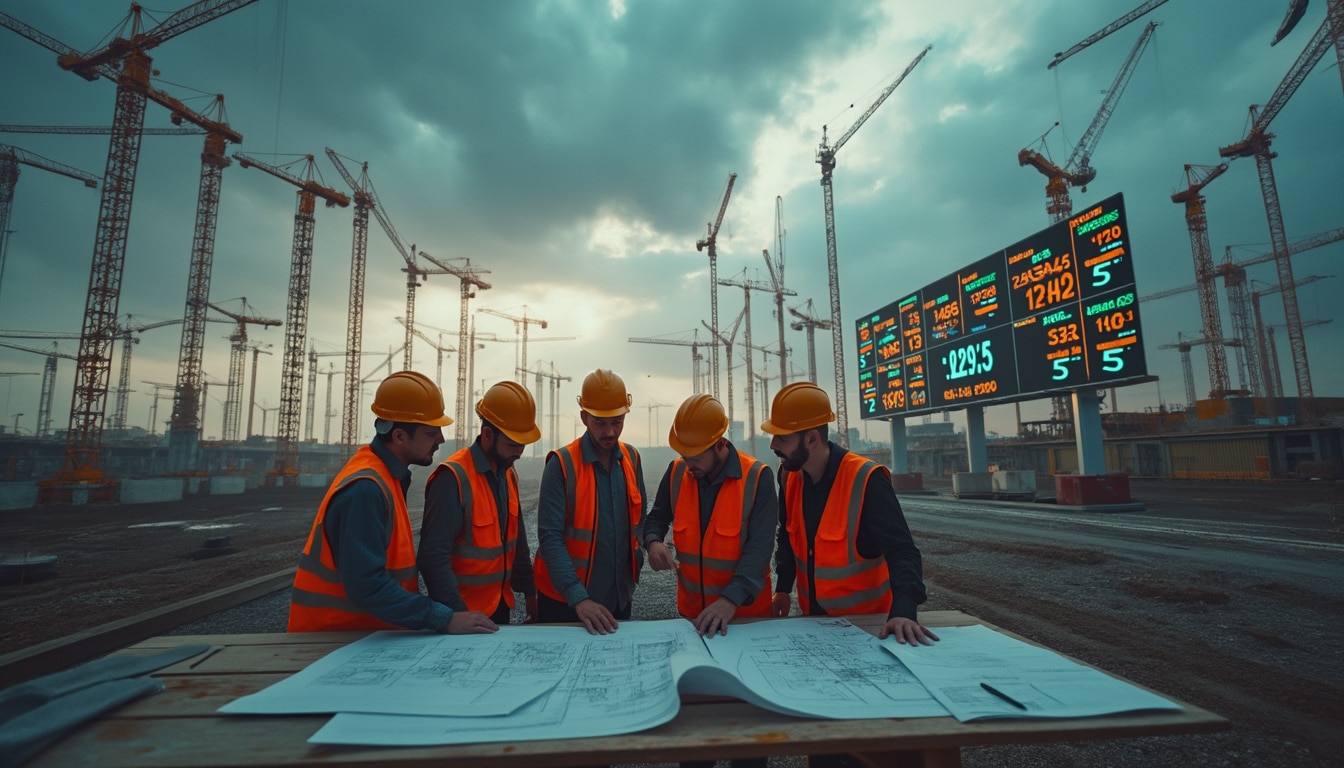IT leaders in companies navigate an ocean of uncertainties. The constantly evolving strategies of artificial intelligence add an additional layer of complexity. The current tariffs imposed by the United States further complicate their decisions regarding data centers.
In the face of these challenges, planning the location of data centers becomes a real puzzle. Unpredictable tariffs make long-term forecasting difficult. Leaders must juggle technological innovation and economic constraints. This seemingly deadlock situation tests their ability to make strategic decisions.
“`html
Table of Contents
ToggleThe tariff war: a threat to data centers
In a constantly evolving global economic context, the tariff war between major powers creates major turbulence for the technology industry. Data centers, essential pillars of digital infrastructure, find themselves at the heart of this turmoil. IT leaders in large companies are faced with complex strategic decisions regarding the location and construction of these crucial facilities.
The tariffs imposed by the United States on various technological components make planning for data centers abroad particularly uncertain. This situation transforms what was once a reasonable business decision into a real dilemma without an end. The volatility of tariffs increases not only costs but also introduces unpredictability that complicates long-term management of IT infrastructures.
Why IT leaders are redefining their strategies
Corporate IT leaders are facing a dual immediacy of uncertainties, complicating their decisions regarding the construction of data centers. On one hand, rapidly evolving strategies related to generative artificial intelligence (genAI) require robust and flexible infrastructures. On the other hand, the tariff wars instituted by the United States add an additional layer of complexity and uncertainty.
Alvin Nguyen, senior analyst at Forrester, emphasizes: “This is clearly a fluid situation. The stated goal of the U.S. administration is to further stimulate development in the United States. However, some of these activities may divert manufacturing capacities and others from data centers outside the United States.” This tension between economic protectionism and technological needs creates a challenging environment for IT decision-makers.
Constantly evolving tariffs disrupt not only the initial construction costs but also affect supply chains and delivery times for essential components. This uncertainty pushes companies to reconsider their deployment plans, sometimes delaying key projects or adjusting their budgets to adapt to new economic realities.
The consequences of tariffs on AI strategies
Artificial intelligence is one of the most dynamic and rapidly growing fields, requiring high-performance data centers. However, current tariffs can significantly slow down innovation in this sector. According to Nguyen, “With all these tariff variations, this could be the factor that slows down AI. And if AI slows down, this will slow down data centers.” This interdependence between AI and data infrastructures underscores the extent of the impact of tariff wars.
Development strategies in genAI rely heavily on the rapid and efficient availability of computing resources. Delays in the construction of data centers, due to tariff increases and economic uncertainties, can hinder the implementation of new technologies and affect companies’ competitiveness in the global market.
How tariffs complicate data center planning
Planning the location of data centers is becoming increasingly challenging in the face of tariff wars. Choosing an appropriate site depends on many factors, including energy costs, cooling resources, proximity to end users, and now, international tariff policies. The time required to build a data center can vary from six months to three years, making cost and pricing forecasting crucial.
Companies must navigate a landscape where tariffs can change based on diplomatic relations and protectionist strategies. This uncertainty regarding tariffs complicates budgeting and long-term planning, forcing IT leaders to consider multiple scenarios and remain flexible in their construction approaches.
Adaptation strategies in the face of tariff uncertainties
In the face of this uncertainty, some companies are attempting to circumvent tariff issues by opting for bulk purchases of necessary components. This strategy aims to secure resources before tariffs are applied, thereby stabilizing costs in the medium term. However, as Nguyen explains, “The idea of trying to anticipate purchases and stock all these parts is complicated. If you operate at scale, this may not be feasible.”
Moreover, the availability of components may be limited by shortages, making this approach risky. Lead times and relationships with manufacturers also play a crucial role in the effective implementation of this strategy. For companies that have already established strong partnerships with suppliers, this tactic can offer some protection against tariff fluctuations.
The impact on costs and investments
Data centers are heavy investments, and increasing tariffs can significantly raise construction costs. According to Scott Bickley from Info-Tech Research Group, “It is not unreasonable to estimate that the material costs of building data centers will increase by about 20%, with a 25% increase in computer hardware components, resulting in an overall increase of about 16% in data center construction costs.” This increase in costs may force companies to reevaluate their investment plans, reducing the intended capacity or seeking additional funding to meet their goals.
Due to these cost increases, some companies may be forced to delay or even suspend their data center construction projects. This decision, while difficult, may be necessary to maintain long-term financial viability, especially in an economic environment characterized by increased volatility of tariffs and costs.
The timing issue: building in uncertainty
The timing is a crucial element in data center construction. The duration of planning and construction, which can range from six months to three years, is heavily influenced by tariff uncertainty. Companies must anticipate not only current costs but also potential tariff changes and their implications for project timelines.
Determining the right time to initiate construction becomes a complex exercise. The possibility of sudden changes in tariffs can lead to cost overruns and unforeseen delays. That is why some IT leaders opt for a cautious approach, adjusting construction timelines based on tariff developments and remaining ready to respond quickly to market changes.
Responses from providers and European governments
In the face of tariff turbulence, European cloud service providers, such as CISPE, are taking clear positions to protect the integrity of the global digital infrastructure. Francisco Mingorance, Secretary General of CISPE, states: “We urge authorities on both sides of the Atlantic to resist the entanglement of cloud and digital services in retaliation and protectionism.” He insists that the cloud is a global resource that benefits from equitable and unrestricted access to chosen services and providers.
This position aims to prevent cloud services, essential to the digital economy, from becoming targets of tariff retaliation. By supporting sovereign alternatives, Europe prepares to maintain the commercial viability of its cloud services, even if tariffs render American services uncompetitive. This strategy is crucial to ensuring the continuity and resilience of digital infrastructures in the face of tariff fluctuations.
Future outlook: navigating troubled waters
The future outlook for data centers in a tariff war context remains uncertain and subject to many challenges. Matt Kimball, Vice President and Principal Analyst at Moor Insights & Strategy, believes that most data center teams can adjust their timelines and navigate the current tariff battles. “Once in operation, data centers typically have a lifespan of 20 to 30 years. I do not see the impact of this trade war, which is temporary, having a significant effect on the construction or operations of data centers in the long term,” he states.
However, Bickley from Info-Tech predicts that tariff-related difficulties will only intensify. With countries like the EU and China likely to amplify the trade war, companies must prepare for extreme short-term volatility. Some data center construction projects may be indefinitely suspended until the situation stabilizes.
Ultimately, the tariff war imposes additional complexity on an already technical and strategic area like data center construction. Companies must demonstrate flexibility and innovation to navigate this uncertain environment, while remaining attentive to political and economic developments likely to influence their long-term decisions.











